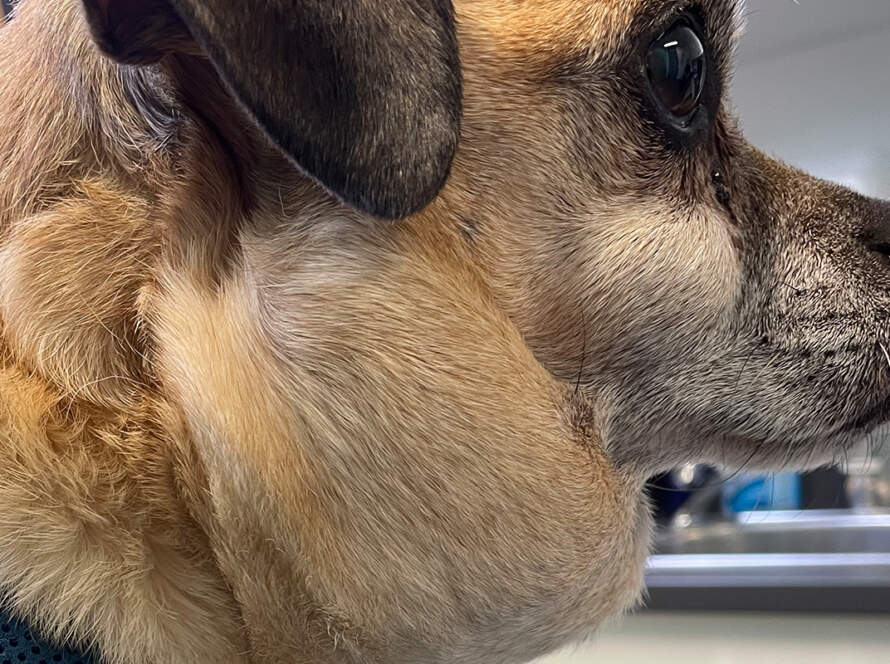7th February 2022
Radiation therapy is now available in some veterinary referral centres and can offer treatment for a huge variety of tumour types and patients. The prescription of a radiation dose and schedule is best made by a Veterinary Radiation Oncologist but it can be helpful to know some details about the different types of radiation therapy potentially available.
Definitive fractionated radiation therapy
Small doses on a daily basis to reach a high cumulative dose. This type of radiation therapy is typically thought of as being delivered with ‘curative intent’. The exact size and number of fractions (doses) will depend on the tumour, patient and machine but typically this approach will involve 10-20 treatments given daily over a 2-4 week period of time. Definitive radiation therapy can be used to ‘mop up’ microscopic residual tumour cells after an incomplete resection of a skin tumour (STS, MCT etc) or used to treat brain tumours (instead of, or after surgery).
Hypofractionated/palliative radiation therapy
Larger doses given once/twice weekly or once per day for fewer total doses. Hypofractionated radiation therapy is typically used to treat a painful or bleeding tumour and aims to help reduce clinical signs in the patient. This type of therapy can be really helpful for patients with bone tumours to help control pain or patients with inoperable tumours to provide some transient control.
Stereotactic radiation therapy
A very new style of therapy that requires a specific machine with highly accurate dose administration abilities. This approach uses large doses but only a small number. The aim is tumour control or shrinkage but minimisation of side effects due to incredibly accurate dosing and minimal radiation administered to any surrounding normal tissues. Treatments are typically given in 1-5 doses during the course of 1 week. Tumour types that have been successfully treated with this approach include canine nasal tumours and brain tumours. Not all machines are capable of this, and not all patients/tumours are suitable.
Brachytherapy
Localised radiation therapy given by emission of radioactive radiation in/near the tumour. Strontium therapy and the insertion of radioactive beads/wires into tumours is performed and the breakdown of the radioactive isotopes release radiation into the tissue nearby. This type of therapy can be useful for superficial skin tumours and in humans is often used for treatment of prostate cancer.


